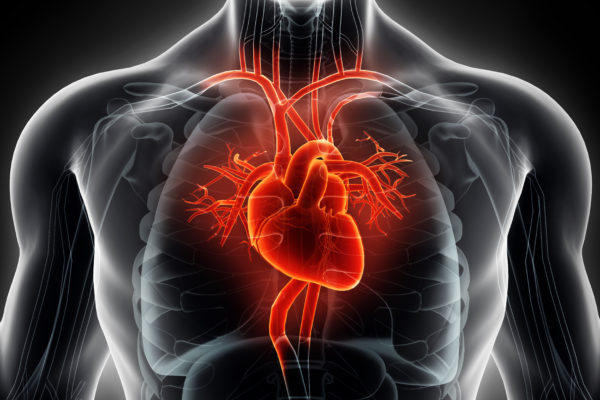A sodium surprise
Irregular heartbeat — or arrhythmia — can have sudden and often fatal consequences. A biomedical engineering team at Washington University in St. Louis examining molecular behavior in cardiac tissue recently made a surprising discovery that could someday impact treatment of the life-threatening condition.
Heart failure linked to altered communication channels
Bright areas in this image highlight the junctions between heart muscle cells.Failing hearts develop interference in their communication channels, according to research conducted at the School of Medicine. The problem involves a subtle change in the pores that connect heart muscle cells. When the scientists duplicated this change in mice, the mice became susceptible to ventricular tachycardia, a dangerous heart rhythm disorder that can lead to sudden cardiac death.
Heart failure linked to altered communication channels
Bright areas in this image highlight the junctions between heart muscle cells.Failing hearts develop interference in their communication channels, according to research conducted at Washington University School of Medicine in St. Louis. The problem involves a subtle change in the pores that connect heart muscle cells. When the scientists duplicated this change in mice, the mice became susceptible to ventricular tachycardia, a dangerous heart rhythm disorder that can lead to sudden cardiac death.
Magnets provide guidance for treatment of abnormal heart rhythms
Faddis and colleagues use a catheter with a magnet at its tip combined with a magnetic guidance system machine to help guide the magnetic catheter as it moves inside the heart.Thanks to advances in cardiology and in magnetic technology, it’s now possible to use magnetic fields to guide tools used to treat certain heart rhythm problems. Cardiologists can treat heart rhythm abnormalities without surgery by using catheters to deliver treatment. Catheters are long, narrow tubes that are run from the groin to the heart via blood vessels using X-ray images for guidance. A team at Washington University School of Medicine in St. Louis has found that the Magnetic Navigation System (MNS) developed by Stereotaxis Inc. allows them to guide catheters within the heart more accurately. Instead of a standard design, MNS catheters contain a magnetic tip. In the same way the needle on a compass aligns itself with the direction of the Earth’s magnetic field, the catheter’s magnetic tip aligns itself with a magnetic field surrounding the patient and allows physicians to more easily guide the catheter in order to locate and treat problem areas in the heart.

